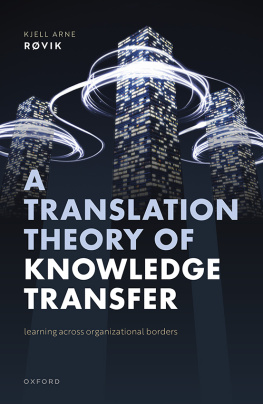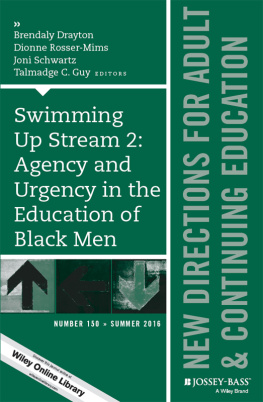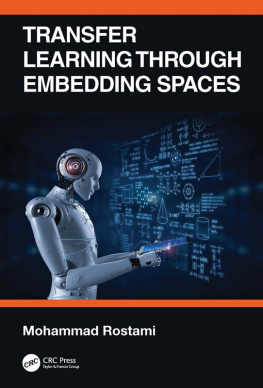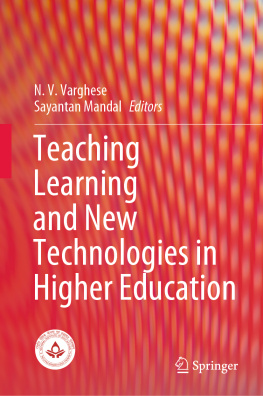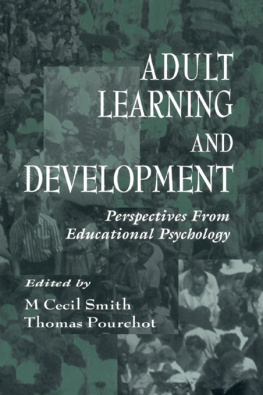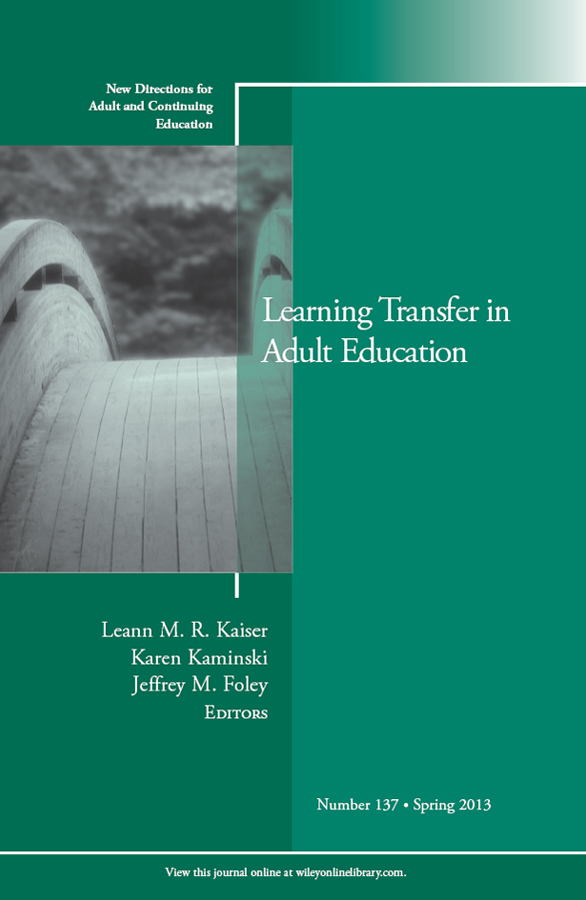Contents

Learning Transfer in Adult Education
Leann M. R. Kaiser, Karen Kaminski, Jeffrey M. Foley (eds.)
New Directions for Adult and Continuing Education, no. 137
Susan Imel, Jovita M. Ross-Gordon, Coeditors-in-Chief
2013 Wiley Periodicals, Inc., A Wiley Company. All rights reserved. No part of this publication may be reproduced, stored in a retrieval system, or transmitted in any form or by any means, electronic, mechanical, photocopying, recording, scanning, or otherwise, except as permitted under Section 107 or 108 of the 1976 United States Copyright Act, without either the prior written permission of the Publisher or authorization through payment of the appropriate per-copy fee to the Copyright Clearance Center, 222 Rosewood Drive, Danvers, MA 01923, (978) 750-8400, fax (978) 646-8600. The copyright notice appearing at the bottom of the first page of an article in this journal indicates the copyright holders consent that copies may be made for personal or internal use, or for personal or internal use of specific clients, on the condition that the copier pay for copying beyond that permitted by law. This consent does not extend to other kinds of copying, such as copying for distribution, for advertising or promotional purposes, for creating collective works, or for resale. Such permission requests and other permission inquiries should be addressed to the Permissions Department, c/o John Wiley & Sons, Inc., 111 River Street, Hoboken, NJ 07030; (201) 748-6011, fax (201) 748-6008, www.wiley.com/go/permissions .
Microfilm copies of issues and articles are available in 16mm and 35mm, as well as microfiche in 105mm, through University Microfilms Inc., 300 North Zeeb Road, Ann Arbor, Michigan 48106-1346.
New Directions for Adult and Continuing Education (ISSN 1052-2891, electronic ISSN 1536-0717) is part of The Jossey-Bass Higher and Adult Education Series and is published quarterly by Wiley Subscription Services, Inc., A Wiley Company, at Jossey-Bass, One Montgomery Street, Suite 1200, San Francisco, CA 94104-4594. Periodicals Postage Paid at San Francisco, California, and at additional mailing offices. POSTMASTER: Send address changes to New Directions for Adult and Continuing Education, Jossey-Bass, One Montgomery Street, Suite 1200, San Francisco, CA 94104-4594
New Directions for Adult and Continuing Education is indexed in CIJE: Current Index to Journals in Education (ERIC); Contents Pages in Education (T&F); ERIC Database (Education Resources Information Center); Higher Education Abstracts (Claremont Graduate University); and Sociological Abstracts (CSA/CIG).
Individual subscription rate (in USD): $89 per year US/Can/Mex, $113 rest of world; institutional subscription rate: $292 US, $332 Can/Mex, $366 rest of world. Single copy rate: $29. Electronic onlyall regions: $89 individual, $292 institutional; Print & ElectronicUS: $98 individual, $335 institutional; Print & ElectronicCanada/Mexico: $98 individual, $375 institutional; Print & ElectronicRest of World: $122 individual, $409 institutional.
Editorial correspondence should be sent to the Coeditors-in-Chief, Susan Imel, ERIC/ACVE, 1900 Kenny Road, Columbus, Ohio 43210-1090, e-mail: ; or Jovita M. Ross-Gordon, Southwest Texas State University, EAPS Dept., 601 University Drive, San Marcos, TX 78666.
Cover photograph by Jack Hollingsworth@Photodisc
www.josseybass.com
Editors Notes
Learning transfer, simply stated, is the ability of a learner to apply skills and knowledge learned in one situation or setting to another (Cormier & Hagman, 1987; Thomas, 2007). This is the ultimate goal of participating in a workshop, class, or other educational pursuit. The learner should be able to effectively use the knowledge or skills gained in these educational settings at work, at home, or in the community (Broad, 1997). If transfer of learning is consciously included in our design and facilitation of learning, we have an enhanced likelihood of attaining this key education tenet.
The topic of learning transfer is not new. In fact, there is a solid body of research examining practices that lead to learning transfer in the contexts of education, training, and human resource development (Baldwin & Ford, 1988; Ford & Weissbein, 1997; Holton & Baldwin, 2003; Holton, Bates, & Rouna, 2000; Sousa, 2011). While there is a strong understanding of how to support transfer of learning within formal education and job settings, few other adult education settings account for learning transfer in the planning or implementation of their educational programs (Merriam & Leahy, 2005). This means we have little evidence that what is taught in one setting or situation is transferred to another, or how to achieve this goal. This issue is an attempt to add depth to the body of knowledge that informs learning transfer in adult education.
It is our hope that this issue can assist practitioners in a wide variety of adult education settings to define what learning transfer means in their area of focus. In addition, they will understand the importance of design for transfer and be encouraged to apply techniques to improve learning transfer for their learners. To achieve this purpose, each chapter included in this issue will introduce and expand upon transfer of learning from a particular focus area.
In Chapter 1, Jeffrey M. Foley and Leann M. R. Kaiser offer an introduction to the concept of learning transfer. They also discuss tools that are central to the context of learning transfer. These ideas are foundational to many of the subsequent chapters in the issue; thus, we would suggest beginning this issue by reading this chapter.
In Chapter 2, Nate Furman and Jim Sibthorp begin the discussion of understanding learning transfer through a specific lens: experiential learning. They highlight how common experiential learning techniques such as service learning and project-based learning can be used to encourage transfer of learning. In addition, they include three adult learning examples that explain how experiential learning techniques can be integrated to optimize transfer of learning.
In Chapter 3, Woei Hung approaches learning transfer from the perspective of problem-based learning. The chapter begins with a discussion on why students may fail to transfer learning and the role that problem-solving skills play. He proposes that problem-based learning may address these issues and shares design guidelines for using problem-based learning to enhance learning transfer.
In Chapter 4, Patricia L. Hardr focuses on the concept of authenticity and discusses how this is a key for using technology for instruction in ways that enhance and support learning transfer. She discusses how an authentic technology representation shows learners what a task, context, or experience will be like in real practice, lending to a greater likelihood of learning transfer.
In Chapter 5, Jacqueline McGinty, Jean Radin, and Karen Kaminski discuss cognitive learning theory and its relationship to learning transfer. To demonstrate this link, the authors present examples of learning environments and instruction facilitation techniques that are compatible with the brains natural processes, using the concept of brain-based teaching.
In Chapter 6, Rosemary Closson begins by noting that infrequently has race, ethnicity, or culture been included as a variable when explaining the learning transfer process. She continues by exploring available theoretical and anecdotal evidence for how these factors may influence learning transfer, concluding the chapter with suggestions for practitioners.


